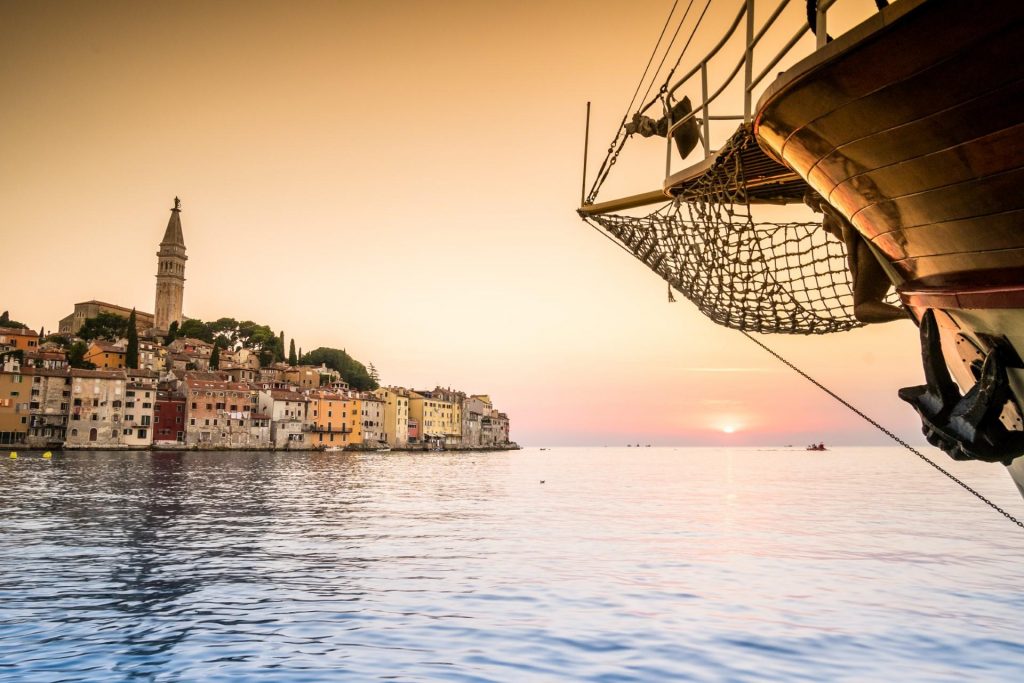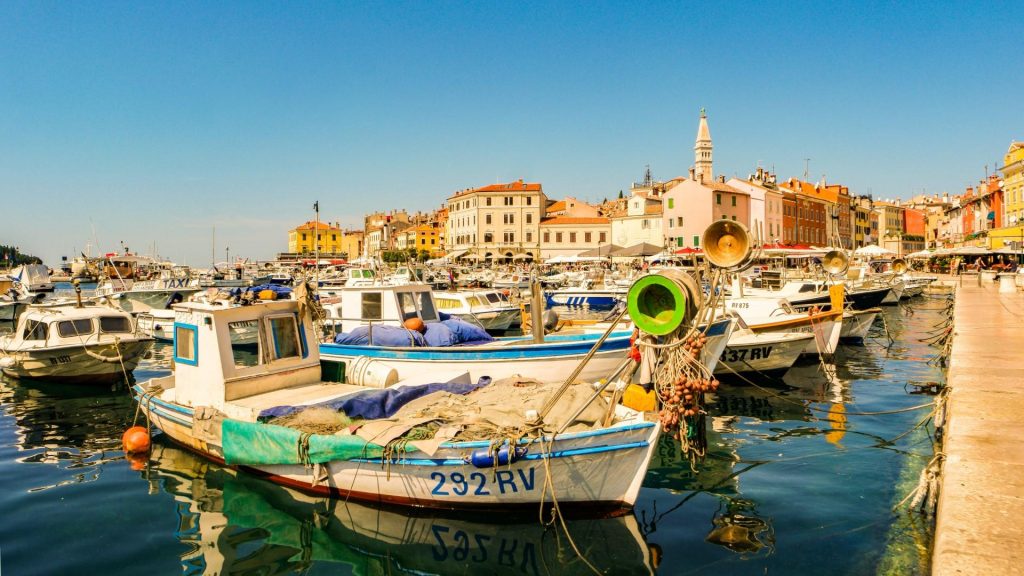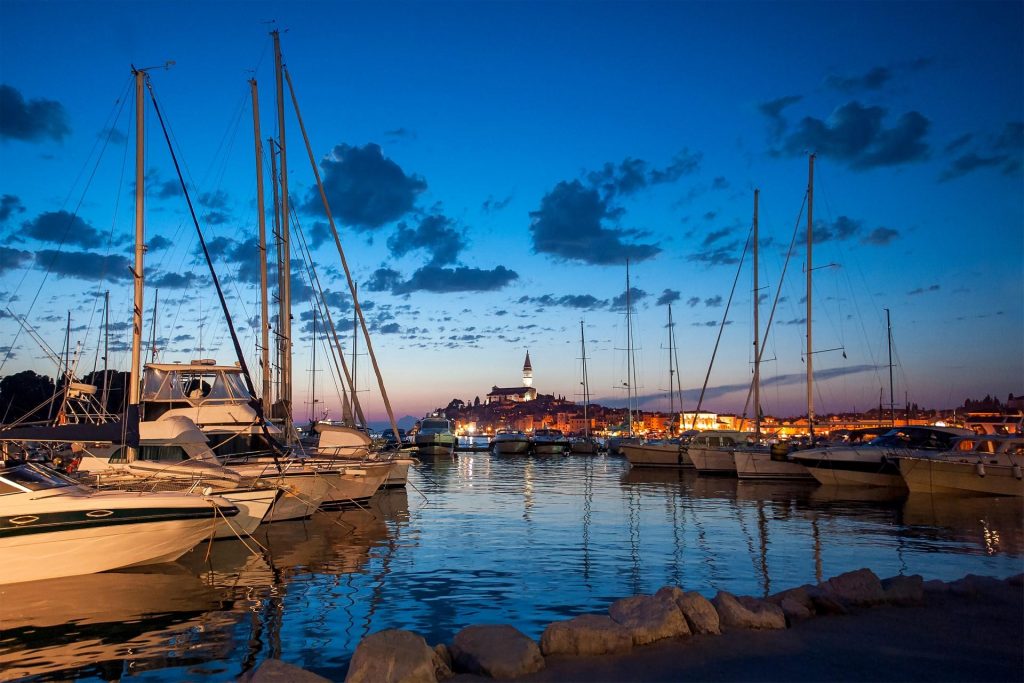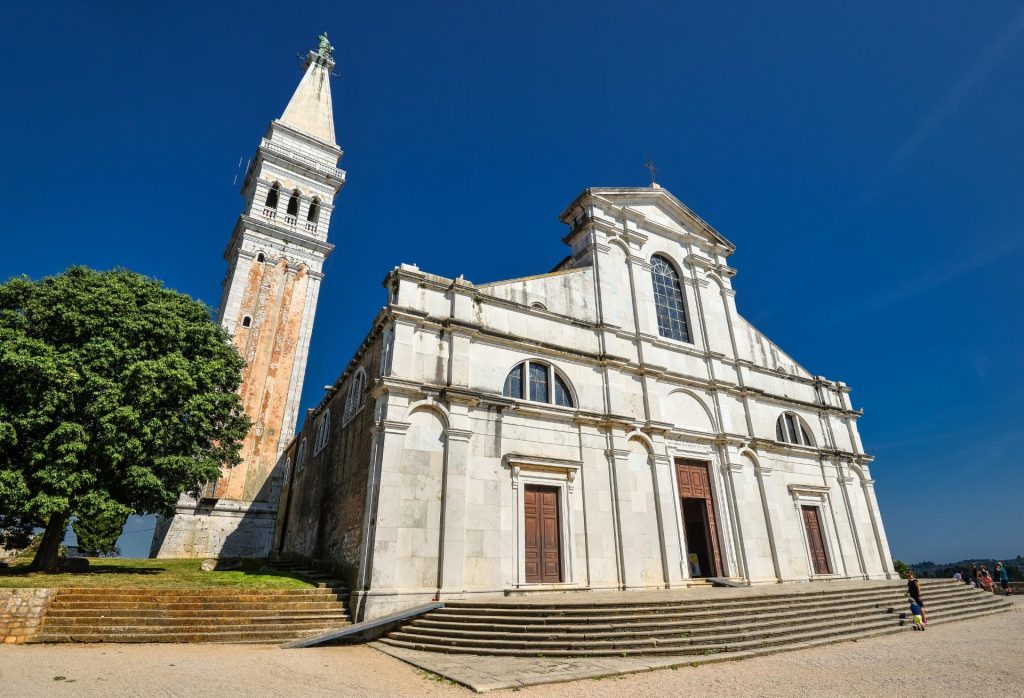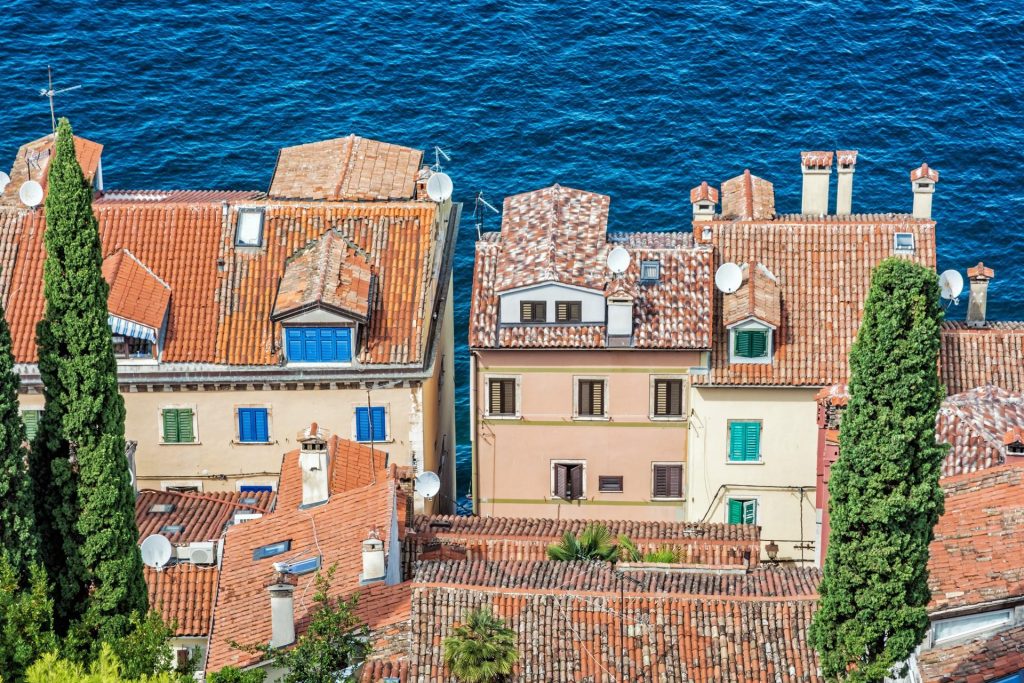Poreč – The Euphrasian Basilica
The ancient town of Parentium, as the old Romans named it, is the home of one of the most amazing sights in the world – the Euphrasian Basilica. This stunning basilica is listed as the Unesco World Heritage site and it is one of the most beautiful and preserved examples of the early Christian and Byzantine art on the world.
Built in the 6th century during the time of the Bishop Euphrasius, this early-Christian compound is the only complete landmark in the world preserved from that period. The complex includes the atrium, baptistery, bishop’s palace, mosaics and remains of sacral buildings dating from the 3rd to the 4th centuries.
The great bishop Euphrasius, originated from Thrace, with his impeccable taste and luxurious affinity has built the cathedral on the site of the older city basilica and implementing accompanying buildings managed to create one of the greatest artistic and architectural complexes of his time. The stylistic richness may be found in every detail, from the stunning facade to the remarkable mosaics, simply astonish both with the crafty construction and the fascinating decoration. The most attractive sight to the visitors are surely the Byzantine mosaics in the apse. At the very top, Christ on his throne presides over his twelve apostles and below, Mary is seated on a celestial globe surrounded by angels. On the left is Bishop Euphrasius with a model of the Basilica in his hand. To the left of the windows is an extraordinary representation of the Annunciation with a beatific Mary.
The quality of the work may be seen from the used materials and the craftsmanship. The marble columns of the Basilica with their capitals were delivered from a quarry on the island of Prokonnesos in the Sea of Marmara near Constantinople, the wonderful ancient Roman stucco decorates the vast arcade along with the liturgical furniture made in Proconnesian marble and the wall mosaics were executed by the best Byzantine masters.
Unique, exquisite and stunning, the Euphrasian Basilica is a must-see sight not just because of its historical and religious importance, but also for its amazing beauty.
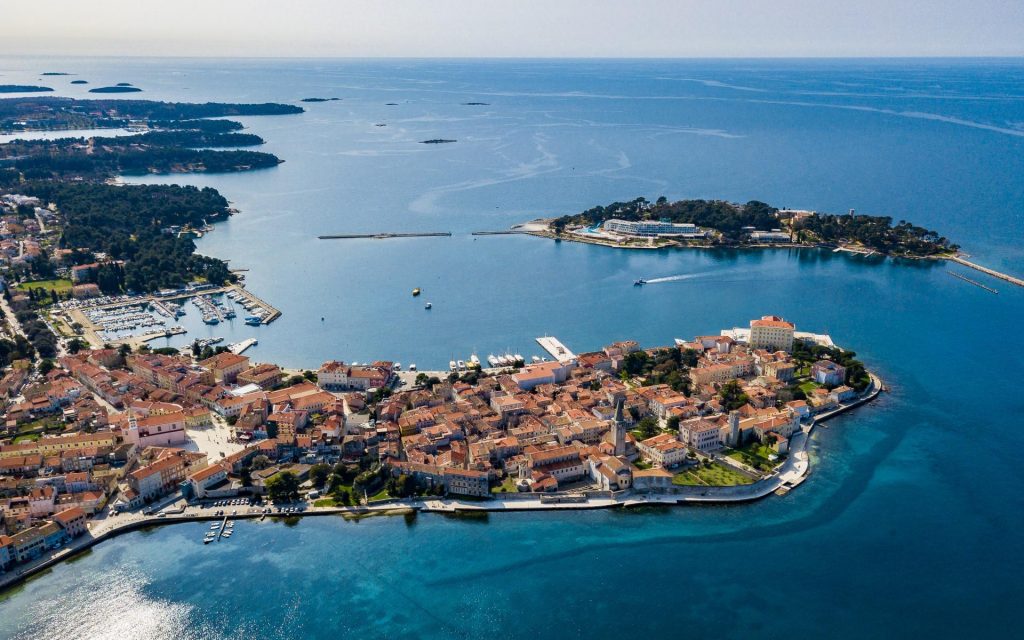
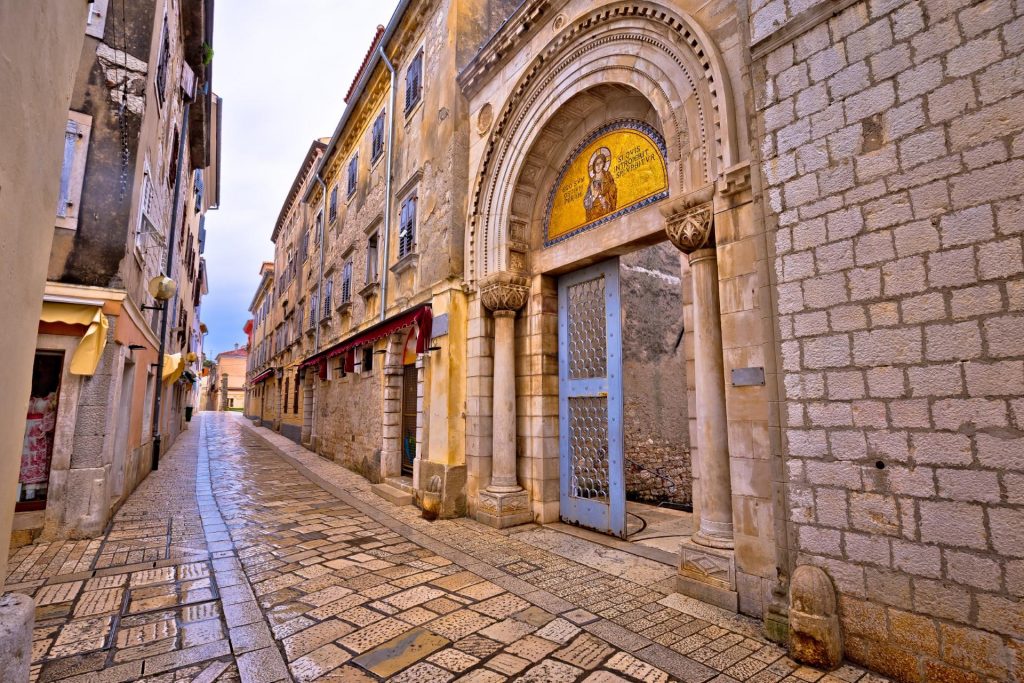
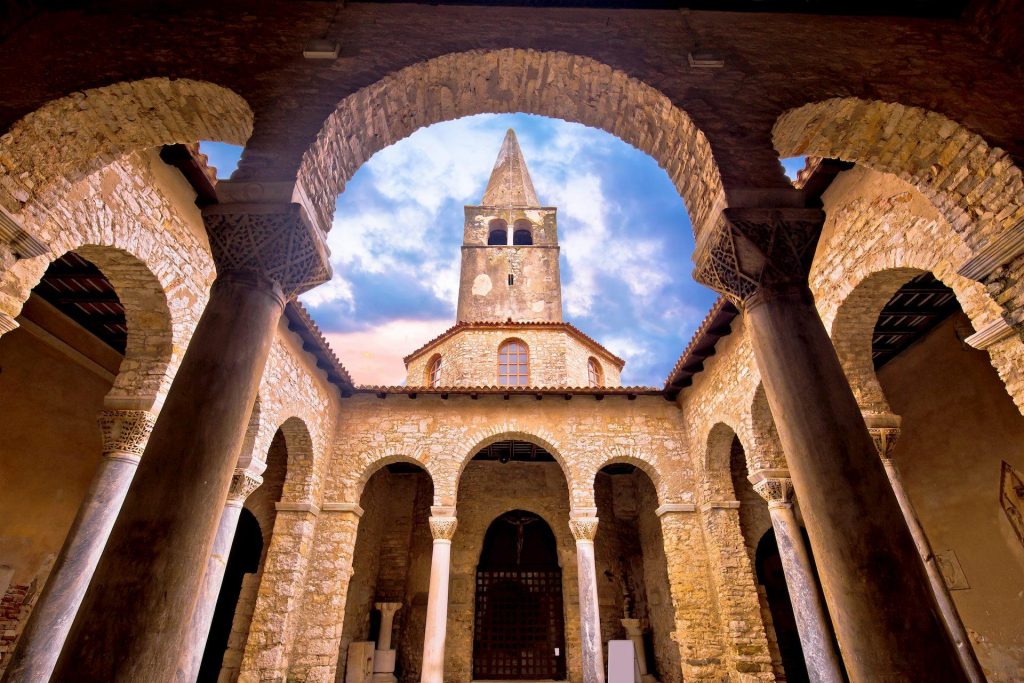
Rovinj – Cissa, the tale of the Istrian Atlantis
Magical Rovinj, the pearl of the Mediterranean, captivates everyone with its breathtaking beauty. Incredibly romantic and enchanting, this old town whispers its long history to every visitor. Old colorful palaces are kissed by the sun and the blue sea which still holds many secrets. This is the place where ancient legends come alive.
Like the one of Cissa, the lost island with its glorious town.
The year was 304, according to the old scripts. The sun was high and the people of Cissa were spending their day like any other, grateful for another day in paradise. But all of a sudden, the horrible noise foretold the terrible earthquake which stole their lives and their prosperous piece of heaven. The few survivors witnessing the violent disaster from another shore could only helplessly watch how their wonderful home Cissa gets swallowed by the deep sea and vanishes under the great waves. But the human spirit always goes on. The lucky ones which have survived the tragedy gathered together and founded the city of Rubino which stands even today and proudly bears the name of Rovinj.
The old Cissa could still be seen through the transparent waters in front of the new town. Its massive walls, palaces, and houses were a vivid reminder of once famous history vanished in just a few moments by the great powers of Nature. But the destiny played another harsh move with Cissa. Almost 400 years later, another earthquake hit the coast and the ancient Cissa sunk deeper taking away all its glory. The keepers of ancient wisdom made the promise to live and tell the tale of the wonderful island and its fascinating history keeping it alive to this very day.
The ancient legend of Cissa tickled the imagination of historians and archeologists for many centuries. What is known about this Adriatic mistery are the writings that are found from various sources? According to the legend, Cissa was a beautiful, powerful and prosperous island that was famous in the ancient times for producing fabulous paints. Famed Italian historian Pietro Kandler have gathered the information from early writers and tried to locate it in the 19th century. According to the scripts from the Roman historian Pliny the Elder, Cissa has been famous during his days due to its numerous inhabitants and stunning architecture. 500 years later the „Fabula cissana”, or the story of Cissa, was titled in the chronicle at the Chruch Synod in Grado as well as in the 9th century, claiming the ancient city was rich and prosperous. Pietro Kandler took his own expedition convinced that the remains of Cissa should be found „in the circle of 500 feet, at a depth that varies from 18 to 20, 25, and even 30 Venetian aquatic feet”. He mentions objects taken out of waters of Cissa: tiles, square stones, grooved stones, and even a window jamb was brought to light.
The ancient legend of Cissa tickled the imagination of historians and archeologists for many centuries. What is known about this Adriatic mistery are the writings that are found from various sources? According to the legend, Cissa was a beautiful, powerful and prosperous island that was famous in the ancient times for producing fabulous paints. Famed Italian historian Pietro Kandler have gathered the information from early writers and tried to locate it in the 19th century. According to the scripts from the Roman historian Pliny the Elder, Cissa has been famous during his days due to its numerous inhabitants and stunning architecture. 500 years later the „Fabula cissana”, or the story of Cissa, was titled in the chronicle at the Chruch Synod in Grado as well as in the 9th century, claiming the ancient city was rich and prosperous. Pietro Kandler took his own expedition convinced that the remains of Cissa should be found „in the circle of 500 feet, at a depth that varies from 18 to 20, 25, and even 30 Venetian aquatic feet”. He mentions objects taken out of waters of Cissa: tiles, square stones, grooved stones, and even a window jamb was brought to light.
